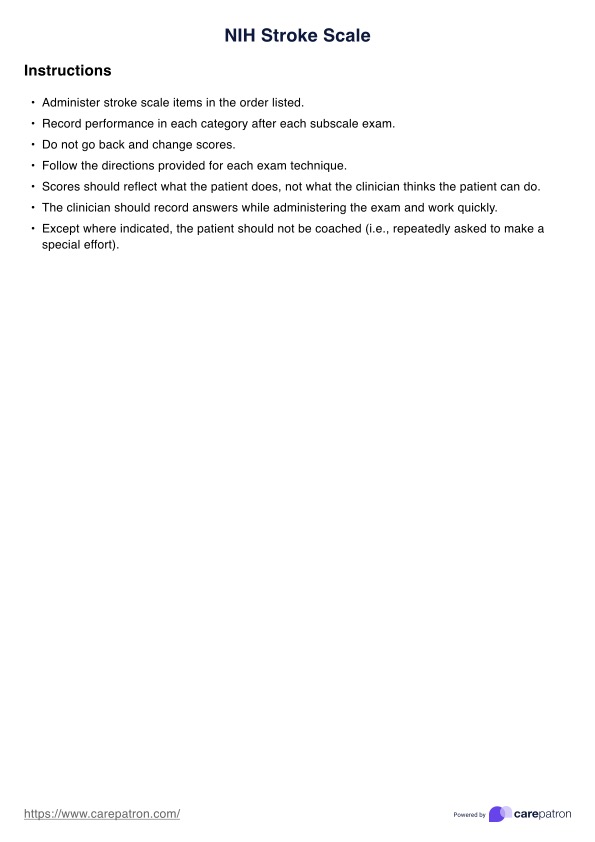Interpretation is pretty straightforward. The higher the total number, the more severely impaired your patient is. Generally, anything higher than 25 should be a cause for concern.

NIH Stroke Scale
Utilize this NIH Stroke Scale (NIHSS) to assess the neurological function of your patient who experienced a stroke. Download and edit the template for free.
Use Template
NIH Stroke Scale Template
Commonly asked questions
The NIH Stroke Scale measures stroke severity. More specifically, the patient’s neurological function post-stroke.
Administering the NIH health stroke scale is as simple as following the instructions we provided above and asking the patients to follow what’s written on the template.
EHR and practice management software
Get started for free
*No credit card required
Free
$0/usd
Unlimited clients
Telehealth
1GB of storage
Client portal text
Automated billing and online payments











